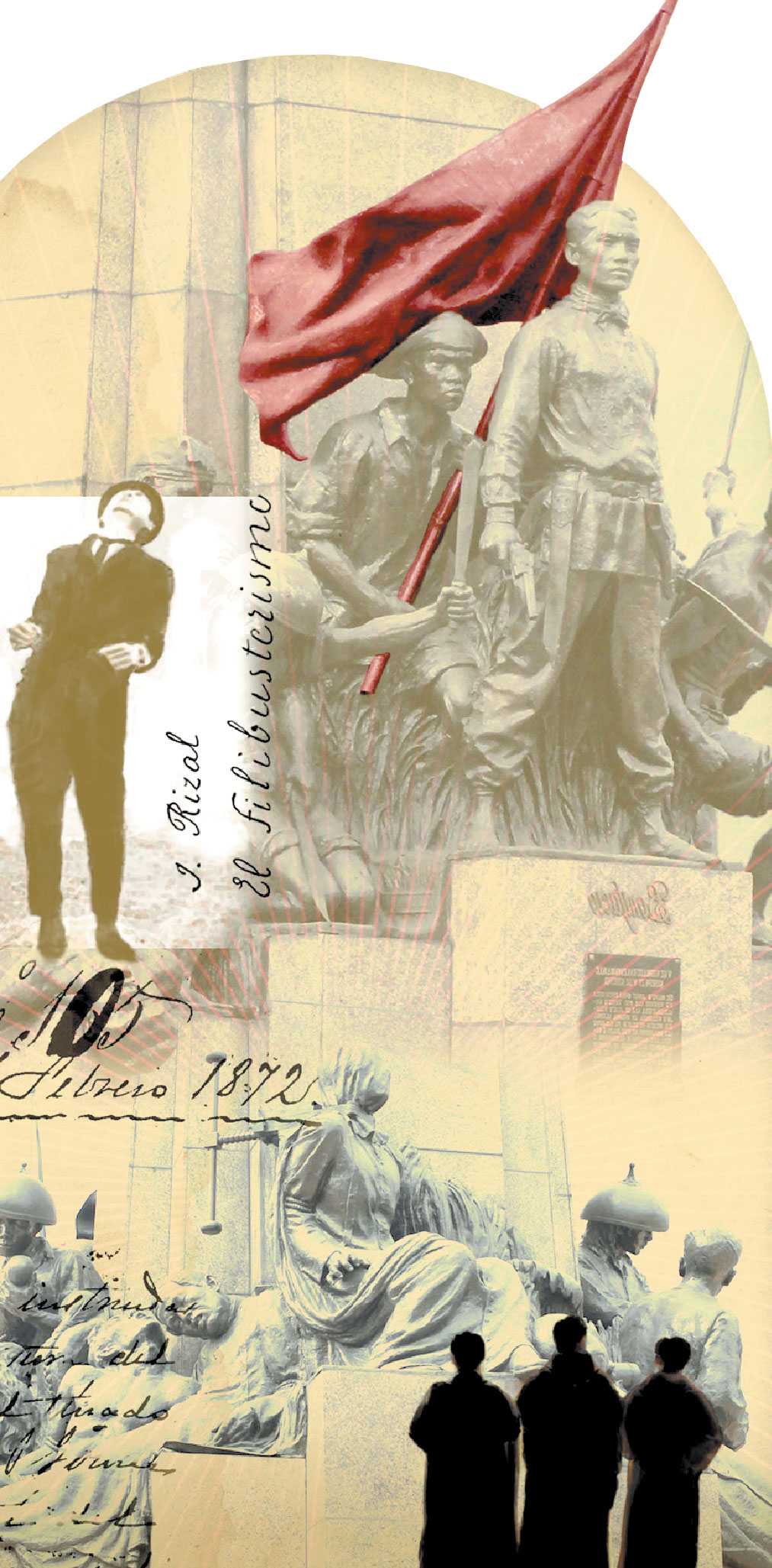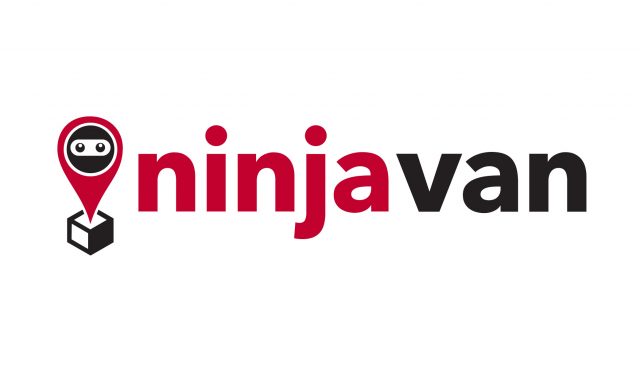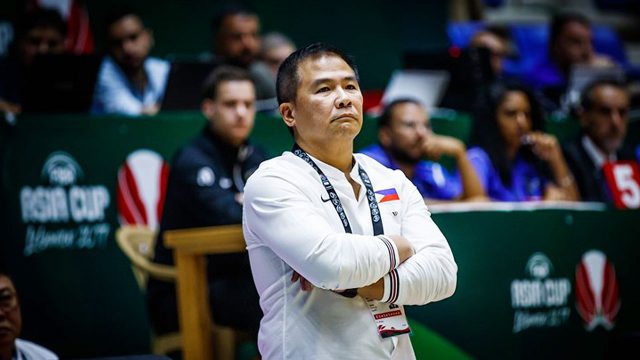commemorates martyrdom of Gomburza
 FILIPINO nationalism, consciousness, and freedom are the focus at the month-long celebration of the 2022 UP Diliman Arts and Culture Festival. This year’s particular focus is on the three martyred priests from the Spanish era, Fr. Mariano Gomez, Fr. Jose Burgos, and Fr. Jacinto Zamora, known collectively as Gomburza or GomBurZa.
FILIPINO nationalism, consciousness, and freedom are the focus at the month-long celebration of the 2022 UP Diliman Arts and Culture Festival. This year’s particular focus is on the three martyred priests from the Spanish era, Fr. Mariano Gomez, Fr. Jose Burgos, and Fr. Jacinto Zamora, known collectively as Gomburza or GomBurZa.
First celebrated as Diliman Month in 1949 to commemorate the official transfer of the statue of the Oblation from the University of the Philippine (UP) campus in Padre Faura to its sport in the Diliman campus, in recent years the festival has been mounted in conjunction with the celebration of National Arts Month. Each year, the arts festival’s theme commemorates a historical event or aspect in Philippine culture.
This year’s festival takes place throughout February and March and has as its theme, “kaMALAYAn: Pamana ng GomBurZa @ 150.” The festival commemorates the 150th anniversary of the martyrdom of the three priests.
Frs. Gomez, Burgos, and Zamora — who served in Bacoor, the Manila Cathedral, and Marikina, respectively — were critics of Spanish colonial rule and championed the rights of native-born clergy. They promoted the management of parishes by Filipino secular priests instead of Spanish friars.
Then, on Jan. 20, 1872, 200 soldiers and laborers rose up against the colonizers, seizing the military camp of Fort San Felipe in Cavite. The Cavite mutiny lasted only two days and many arrests followed, including those of people who were not involved. Support for liberal ideas was the only similarity among the detainees. The three priests were among those falsely accused of instigating the mutiny. Summarily tried, they were sentenced to death by garrote in a public execution on Feb. 17, 1872.
“The event became a historical turning point because it affected the consciousness of a new generation of Filipinos who were willing to fight the injustices of colonial rule and to strive to work for our freedom as a nation,” Cecilia S. De La Paz, PhD, director of UPD Office for Initiatives in Culture and the Arts and the festival’s project head, told BusinessWorld in an e-mail.
Ms. De La Paz explained that for the festival, significant historical events are listed down each year, then consultations are held with various stakeholders in the humanities and social science department. The relevance of these events in history are then examined in the context of present-day Philippine society.
“For 2022, the UP Department of History recommended the study and reflection of the 150th year commemoration of GomBurZa’s death, construed to be the seed of the ‘Filipino consciousness,’ as articulated by the 19th century revolutionary intellectuals such as Jose Rizal, Andres Bonifacio, Marcelo Del Pilar, Apolinario Mabini, among others,” Ms. De La Paz said.
“The festival aims to contribute to the discussion of contemporary Filipino consciousness as we re-calibrate our lives in these pandemic times,” she said.
The festival includes lectures, conferences, webinars, workshops, exhibits, and art installations which will be held physically, virtually, or in a hybrid format.
This year’s projects include: “ATANG, a sound prayer,” an art installation and virtual exhibit at the Oblation Plaza which will be on display from March 18 to April 18; the History department’s “Talastasan sa Kasaysayan Webinar Series: Philippine Nationalism Beyond 1872” which will be held on Zoom and Facebook Live on Feb. 21, 28, and March 14; an online program launch and exhibition of the “Bulwagan ng Mga Bayani: Alay, Alaala, at Pagpupugay sa mga Bayani ng Pilipinas” at the UP Asian Center Museum on March 21 (3 p.m. via Zoom) with access to the exhibition videos through the Asian Center YouTube Channel; an online conference titled “Bagumbayan: Stories of Place and Identity” (National Conference on the 150th Anniversary of the GomBurZa Execution) on March 9 (8 a.m. to 5 p.m.) and March 10 (9 a.m. to 5 p.m.) via Zoom and Facebook Live.
There will also be a virtual concert, HIMIGSIKAN sa Jingle Magazine: Malayang Tipaan at Kuwentuhan, on March 25, 7 p.m., at the UPD-OICA YouTube Channel. The virtual concert — which will take the form of a music talk show — features musicians who were influenced by the publication JINGLE Magazine, and subsequently contributed to the birth of OPM, including Joey Ayala, Noel Cabangon and Paul Galang.
Meanwhile, a photo exhibit focusing on Martial Law will also be held. Called “Dark Memories,” it will open on March 15 at the UP Diliman Academic Oval. In this photo documentary exhibit by Rick Rocamora, Martial Law human rights violation victims are the focus as heroes, as Gomburza were 150 years ago, “whose documented sufferings ignited in the consciousness of fellow Filipinos, an aspiration for freedom fueled by love of country.”
The program also features virtual projects from other UP Diliman units that align with the themes of the festival. These include online conferences via Zoom and Facebook Live — the College of Architecture’s Living in The Philippines: Realizing Identity from Different Disciplinal Perspectives on March 7, 2 p.m., and the Department of Linguistics’ “Lexicon Unpacked: Alay, malay, laya” on March 17, 2 p.m.
“We believe art and culture activities are important, especially during the pandemic, because it offers perspectives that are rooted on the human condition, and thus offer hope for a better tomorrow,” Ms. De La Paz said.
For more information about the festival, access the following link for the brochure of activities: https://bit.ly/UPDACF2022-Brochure. Interested parties can also send an e-mail to the UP Diliman Office for Initiatives in Culture in the Arts (UPD-OICA) at specialprojects_oica.upd@up.edu.ph or follow UPD-OICA’s Facebook page, https://www.facebook.com/updoica. — Michelle Anne P. Soliman













